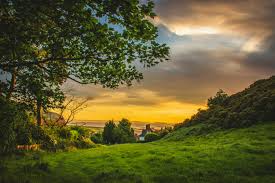In a world where daily life is often dominated by screens and schedules, our outdoor spaces serve as a sanctuary for relaxation, connection with nature, and creative expression. Landscaping is not just about plants and pathways; it’s about transforming an open space into an oasis that reflects your personality and complements your lifestyle. Whether you’re a seasoned gardener or a complete novice, this guide will inspire you to cultivate a landscape that is both beautiful and functional.
The Essentials of Landscape Design
1. Understand Your Space
Before you start digging or planting, it’s crucial to understand the unique characteristics of your landscape. Take note of:
- Climate and Soil Type: These will determine what plants will thrive.
- Sunlight Exposure: Observe how the sun moves across your space to decide where to place shade-loving or sun-loving plants.
- Water Drainage: Identify areas that may need improved drainage or that are prone to waterlogging.
2. Define Your Style
Your landscape should be an extension of your personal style. Here are a few popular landscaping themes to consider:
- Modern: Clean lines, minimalist plantings, and materials like concrete and metal.
- Cottage: Overflowing with colorful, informal flowers and winding pathways.
- Zen: Simple, serene spaces with sand, stones, and carefully placed plants.
Designing Your Dream Landscape
1. Plan the Layout
Create a rough sketch of your yard, marking key features such as existing trees, buildings, and water features. Decide on the main areas you want to include, like a patio, garden beds, or a water feature. Use principles of design, such as balance and focal points, to create a cohesive and aesthetically pleasing layout.
2. Choose Your Plants Wisely
Selecting the right plants is crucial to the success of your landscape. Consider:
- Native Plants: These are adapted to your local climate and require less maintenance.
- Perennials vs. Annuals: Perennials come back year after year, while annuals need to be replanted each year.
- Evergreens and Deciduous: Evergreens provide year-round structure, while deciduous plants offer seasonal interest.
Enhancing Your Landscape
1. Incorporate Water Features
Water features, such as ponds, fountains, and waterfalls, can add a sense of tranquility to your landscape. They can serve as focal points and attract wildlife, adding to the biodiversity of your garden.
2. Add Lighting
Strategic lighting can transform your landscape at night, highlighting key features and making pathways safer. Consider solar-powered lights for an eco-friendly option.
3. Outdoor Living Spaces
Create areas for relaxation and entertainment. A patio or deck can serve as an outdoor dining area, while a fire pit can provide a cozy gathering spot.
Sustainable Landscaping Practices
1. Water Conservation
Implementing xeriscaping techniques, such as using drought-tolerant plants and installing drip irrigation systems, can help reduce water usage.
2. Composting
Recycling organic waste into compost can enrich your soil and reduce the need for chemical fertilizers.
3. Wildlife Habitat
Incorporate native plants and water sources to create a haven for local wildlife, including birds, bees, and butterflies.
Maintenance Tips
1. Seasonal Care
Different seasons require different maintenance tasks. Spring and fall are ideal for planting, while summer focuses on watering and weeding, and winter involves protecting plants from cold weather.
2. Pruning and Weeding
Regular pruning helps maintain plant health and shape. Weeding prevents unwanted plants from competing with your garden plants for nutrients and water.
3. Soil Health
Healthy soil is the foundation of a thriving landscape. Regularly test your soil and amend it with organic matter as needed to maintain its fertility.
Conclusion
Creating a beautiful and functional landscape is an art that requires patience, planning, and a touch of creativity. Whether you’re looking to design a peaceful retreat or a vibrant gathering space, the key is to create a landscape that resonates with your personal style and meets your practical needs. Embrace the process, experiment with different ideas, and most importantly, enjoy your outdoor oasis.
